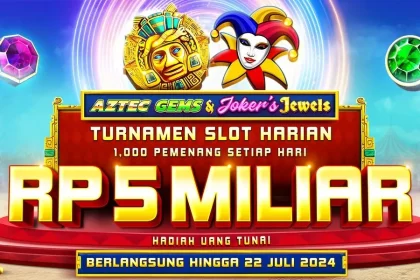In recent years, webtoons have taken the world by storm, transforming the 무료 웹툰 추천 way people consume comics and introducing a unique storytelling medium to a global audience. These digital comics, typically formatted to be easily read on smartphones, are gaining popularity not only in their home country of South Korea but also internationally, thanks to their accessibility, diverse genres, and evolving art styles. The success of webtoons marks a new era in the world of comics, where traditional comic books face competition from these dynamic, visually rich digital narratives.
What is a Webtoon?
A webtoon is a digital comic that originated in South Korea. The term “webtoon” is a combination of “web” and “cartoon,” and these comics are specifically designed for online consumption. Unlike traditional comic books, which are typically published in print and follow a fixed page layout, webtoons are optimized for mobile devices, often featuring long vertical scrolling. The webtoon format allows for easy reading, even in small increments, making it a perfect fit for the fast-paced, on-the-go lifestyle of today’s digital consumers.
One of the most distinctive features of webtoons is the way they are released. While print comics tend to release new issues on a monthly or weekly schedule, webtoons are often updated in real-time, with episodes released weekly, bi-weekly, or even daily. This regular update schedule keeps readers engaged and excited for the next installment, contributing to the rise of fandoms and online communities.
A Global Phenomenon
Although webtoons began as a phenomenon in South Korea, the genre has rapidly expanded to other parts of the world, especially in regions like the United States, Southeast Asia, and Europe. South Korean platforms like Naver Webtoon (now known as LINE Webtoon in English-speaking regions) and KakaoPage were some of the first to popularize the format, offering a wide range of content, from romance to fantasy to action, all created by both professional and amateur artists.
The global appeal of webtoons can be attributed to several factors. First, their easy accessibility—readers can enjoy webtoons on their smartphones, which are ubiquitous across the world—makes them a convenient and enjoyable medium. Secondly, webtoons cater to a diverse range of tastes, providing content for all age groups, from children’s comics to mature, thought-provoking stories. Additionally, the format’s vertical layout offers an immersive reading experience, with beautiful art that flows seamlessly across the screen.
Webtoons’ accessibility isn’t limited to just reading; they also provide opportunities for aspiring creators to showcase their work. Many webtoon platforms allow independent creators to upload their comics, often leading to viral success stories. For instance, series like “Tower of God” and “Lore Olympus” began as webcomics by unknown creators and have since garnered massive international followings, with some even being adapted into animated series.
The Diversity and Innovation of Webtoons
One of the most exciting aspects of webtoons is the freedom they offer creators to experiment with both story and art. Webtoons come in a wide variety of genres, including action, romance, horror, slice-of-life, fantasy, historical, and even non-fiction. The broad range of themes and the lack of strict creative boundaries have led to groundbreaking works that might not have fit into the traditional comic book scene.
For example, “Noblesse,” a webtoon centered around a powerful vampire, combines elements of horror, action, and supernatural fiction with an engaging narrative that appeals to readers worldwide. On the other hand, “Let’s Play,” which explores themes of mental health and gaming culture, offers a slice-of-life take with an innovative approach to webcomic storytelling. The format’s vertical scrolling layout also encourages dynamic pacing, allowing artists to create dramatic tension and atmospheric storytelling that feels unique compared to traditional comic formats.
Moreover, the integration of multimedia elements is something that sets webtoons apart. Some webtoons incorporate animation, sound effects, and even background music, enhancing the reading experience and bringing the narrative to life in a way that traditional comics simply cannot.
Webtoons and the Future of Storytelling
As webtoons continue to grow in popularity, their influence is extending beyond just the world of comics. Major webtoon platforms are beginning to experiment with other forms of entertainment, such as television, film, and animation. A growing number of webtoons are being adapted into animated series, thanks to their established fan bases and compelling stories. For instance, “The God of High School” and “Tower of God” were both adapted into anime, which introduced the webtoon format to even more fans around the world.
Additionally, the rise of webtoons has opened up a new realm of opportunities for creators. With the ease of self-publishing, many independent artists are now able to make a living from their webtoons, especially through monetization strategies such as exclusive chapters, merchandise, and crowdfunding. The popularity of webtoons has even led to collaborations between major global entertainment companies and webtoon platforms, further strengthening their position in the entertainment industry.
The Future of Webtoons
With their innovative approach to comics and storytelling, webtoons have shown that the digital medium is a powerful tool for reaching audiences. As the webtoon ecosystem grows and evolves, it is expected that even more diverse stories will emerge, providing readers with unique narratives from different parts of the world.
The future of webtoons is bright, and it is likely that this new wave of digital comics will continue to challenge traditional comics and shape the entertainment landscape for years to come. From attracting millions of readers to inspiring a new generation of creators, webtoons are proving to be much more than just a trend—they are a new form of storytelling that is here to stay.

